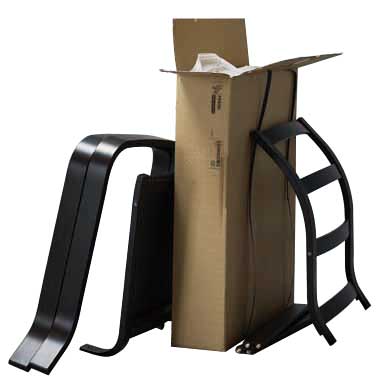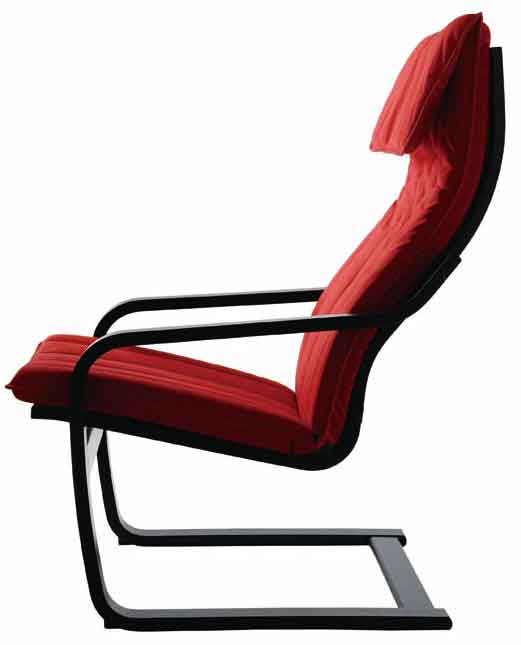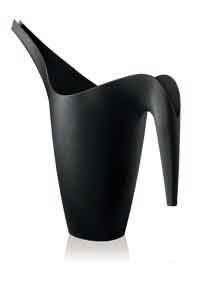IKEA Succeeds in Supplying Furniture for the Majority
2008/02/26 | By Judy LiFounded in 1943 by Ingvar Kamprad in Sweden, IKEA is a privately-held, international home products retailer with a wide-ranging line, including all kinds of furniture, upholstered furnishings, hardware, lighting, ornaments, bedroom dressing, bathroom accessories, kitchenware, office furniture, and related accessories at stores around the world. And one often neglected albeit interesting feature of the IKEA chain is its causal diner that offers some of the most reasonably-priced, tasty fares, and in Taipei that includes a poached salmon dish, a perennial favorite.

With rapid expansion over the past six decades, the company now runs a total of more than 270 stores in some 36 countries around the world, mainly in Europe, the United States, Canada, Australia and Asia. Today the word "IKEA" is not only synonymous with furniture but also epitomizes the increasingly popular DIY culture everywhere; while its eye-catching yellow and blue logo may be one of the most internationally recognizable corporate identities in locations where it has stores.
Taipei, Taiwan
The company established its first foothold in Taiwan in 1994 and now runs three stores on the island. "The success of the company should be attributed to its philosophy and vision set by Kamprad, the founder, who believes that all consumers worldwide, whether rich or poor, have equal rights to own quality furniture at reasonable prices," says Dawn Thum, range and marketing director at IKEA's Taiwan office.

"Mr. Kamprad emphasizes that most consumers like well-designed, comfortable furniture to be fitted at their homes. So the eternal aim of the company is to provide such furniture at reasonable or relatively cheaper prices to a majority of consumers," Thum states. "To cater to the taste of the majority of consumers, IKEA furniture tries to carry lines of products tinged with three main characteristics: modern, young, and pastoral."
To meet the endless varieties of tastes, needs of all kinds of consumers from various cultures and customs worldwide, IKEA offers products in various patterns, colors, designs and materials. Since the company targets the majority of people as its client base, it therefore tries to aim for middle of the road tastes, carrying lines that tend to feature cosmopolitan qualities. In other words, IKEA products generally will not offend people of any race, creed, color or taste-able to please moms from Wichita, Kansas equally as auto mechanics from Rio de Janeiro.

"To offer so many different furniture items to so many people in the world, IKEA has to find suitable suppliers around the world and sign them as contractors to provide the company with best products or materials at best prices. For instance, the suppliers in North Europe and China provide the company mainly natural wooden furniture and related items, and those in India supply upholstery fabrics and related furniture," Thum explains. "With such sourcing motto, IKEA can obtain quality materials and products at relatively cheaper prices."
"IKEA designers are quite different from the inspiration-oriented ones since they are required to catch up with the market trend and to take utilitarian factors into consideration before trying to develop new furniture models," Thum indicates. "Among the utilitarian factors are manufacturing cost, the prices of materials, the convenience of package and prompt delivery."
"Generally speaking, IKEA designers have to be very sensitive in cost efficiency. For instance, the price of materials and manufacturing process of a chair priced at US$300 are different from the one at US$500. To precisely control the cost, the designers have to frequently contact supervisors and workers at the production lines to see how they can design the products that are not only marketable, but also profitable," Thum adds.
So, IKEA furniture has been well known for its utilitarian or no-nonsense design. Much of IKEA's furniture is designed as knocked-down or DIY pieces rather than sold pre-assembled. IKEA claims this permits them to reduce costs via minimizing packaging, hence allowing them to ship by air. The volume of a bookcase, for example, is considerably less if it is shipped unassembled than otherwise. This is also a very practical point for especially many of the chain's European customers, who routinely rely on public transport to carry shopping or other portable goods. The flat-pack distribution methods allow for easier transport via mass transit from stores to customers' homes.
Democratic Design
IKEA contends that it has been a pioneering force in sustainable approaches to mass consumer culture. "The founder refers to the concept as 'democratic design,' meaning that the company applies an integrated approach to manufacturing and design," Thum says. To cope with global population explosion and worsening, projected depletion of natural resources in the 20th and 21st centuries, the company tries to achieve economies of scale, capturing material supplies and creating manufacturing processes that effectively minimize costs and resource usage, such as the extensive use of particle board, a popular way to recycle sawdust and hence reduce wastage. The result achieved is flexible, adaptable home furnishings scalable both to smaller homes and dwellings as well as large houses.
In recent years, IKEA has been paying more attention to the development of environment-friendly products and its contracted suppliers are also required to use natural, non-toxic, and recyclable materials to generate products that have to meet IKEA standards. "IKEA feels that it is its social duty to educate both manufacturers and consumers to protect the environment in which we live since we have only one earth, a place that we have been abusing, polluting and destroying."
IKEA's suppliers in Taiwan are mainly glass and metal furniture manufacturers and the company has in recent years been forced to turn to China and Vietnam, where a great number of Taiwan furniture manufacturers have moved.
"Before entering a new market, IKEA has to educate local workers to learn the company's criteria, philosophy and strategies," Thum notes. "China and Japan will be IKEA's two target market in Asia in the coming future." IKEA started to enter the market in Japan about two years ago, and now owns three stores there. As for China, the company has already set up four footholds, including Shanghai, Beijing, Guangzhou of Guangdong Province and Chengdu of Sichuan Province.




